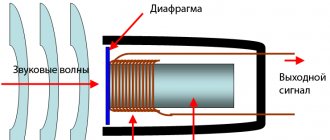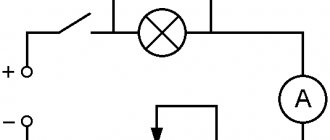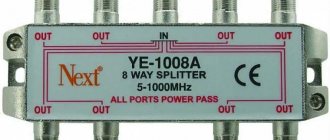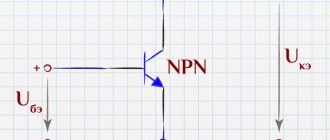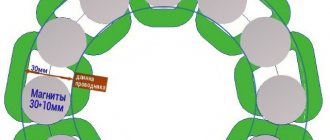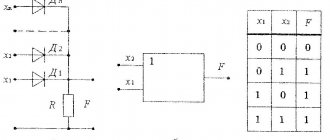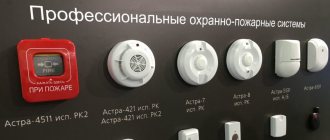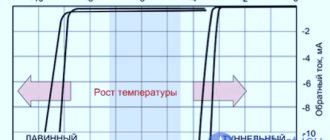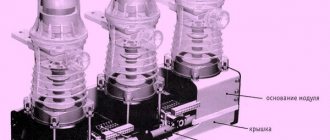Amplifiers
An amplifier is an extremely important component of a stereo system, responsible for amplifying signals coming from sources connected to the amplifier, switching connected sources, adjusting the volume and transmitting the amplified signal to speaker systems for playback. Depending on the level and design, all amplifiers can be divided into single-block (integrated), two-block (a combination of a preamplifier and a power amplifier), three-block (a combination of a preamplifier and two monoblock amplifiers).
Depending on the amplification elements used, there are transistor, tube and hybrid amplifiers, which include both transistors and tubes. Amplifiers come with a built-in power supply and with a remote one, are divided into classes “A”, “B”, “AB”, “D”, and can be analog or digital. There are a lot of varieties of amplification equipment and each technical solution has its own advantages and disadvantages, but do not despair, the specialists of the HIFI PROFI salon will help you choose the best option that will allow you to enjoy your favorite music for many years.
An integrated amplifier is an amplifier in which all functional blocks are located in one housing, including all controls, a preamplifier and a power amplifier.
Depending on the amplification elements used, transistor , tube and hybrid integrated amplifiers are distinguished, which include both transistors and tubes. Integrated amplifiers come with a built-in power supply and with a remote one, are divided into classes “A” “B” “AB” “D”, they can be analog and digital. Integrated amplifiers are the most affordable and easy to connect.
A pre-amplifier is a part of a complete amplifier, made in a separate housing and responsible for the initial amplification of weak signals coming from sources, their switching and volume control. The amplification stages in the preamplifier raise the signal level (amplify) to such a level that the power amplifier can perceive it.
The preamplifier is used in conjunction with a power amplifier or monoblock power amplifiers, as well as with active speaker systems that have their own built-in amplifier. Depending on the amplification elements used, preamplifiers can be transistor or tube.
A power amplifier is a part of a complete amplifier, made in a separate housing and responsible for amplifying the signal coming from the preamplifier and its further transmission to speaker systems.
The main purpose of a power amplifier is to amplify the signal to a level that will allow the connected speaker systems to reproduce it at sufficient volume. Power amplifiers, as a rule, do not have any settings, including volume control, since all adjustments are made from the preamplifier connected to the power amplifier. Power amplifiers also come in both transistor and tube types.
A monoblock amplifier (monoblock) is a power amplifier designed to amplify only one audio channel (only left or only right, thus requiring two monoblock amplifiers for a stereo system). Monoblocks are connected to a pre-amplifier, from which they receive a signal for amplification. Monoblocks come in both transistor and tube types.
A system of a preamplifier and two monoblock power amplifiers, with other characteristics being equal, has much better sound quality than an integrated amplifier or even a combination of a preamplifier and a power amplifier. In essence, this system is, in a sense, a reference system. The main advantage of monoblock amplifiers is the incredibly clear and correct stereo image, practically unattainable by all other types of amplifiers.
A tube amplifier is an amplifier whose circuit design is based on the use of radio tubes as amplification elements. As a rule, tube amplifiers are less powerful than transistor ones. Tube amplifier circuits, compared to similar transistor ones, are simpler and require fewer parts. The nature of the distortions introduced by tube circuits into the signal is much less noticeable to human hearing.
Tube amplifiers are characterized by a “warmer” and “softer” sound with natural reproduction of mid and high frequencies. The downside is that the bass is a bit lightweight, drawn out and vague, especially if the acoustics are poorly selected. A tube amplifier will be a good choice for lovers of jazz, vocals, classical music, and generally music that does not use dynamic, deep and powerful bass. Let's just say that the digital bass of club music is the weak point of a tube amplifier.
A transistor amplifier is an amplifier whose circuit design is based on the use of transistors as amplification elements. As a rule, transistor amplifiers are more powerful than tube amplifiers and create fewer difficulties when selecting acoustics.
Transistor devices have powerful, deep bass and detailed reproduction of mid and high frequencies, but if the transistor circuits are poorly designed, the detail can result in “ringing” and “graininess” in the high frequencies, which, in turn, can tire the listener. The transistor amplifier will be a good choice for fans of club and electronic music, modern rock and other genres where deep and powerful bass is often used.
A hybrid amplifier is an amplifier whose circuit design is based on the simultaneous use of radio tubes and transistors as amplification elements. The goal of hybrid amplifier designers is to combine the advantages of both tubes and transistors in one device (i.e., the desire to take the best from each technology) and, due to this, minimize their mutual disadvantages and, thereby, make the amplifier universal for reproducing any style music.
As a rule, tubes are used in the preliminary part of the amplifier, and transistors are used in the output stages, where they amplify the signal power before transmitting it to the speaker systems. Well-designed hybrid amplifiers are very versatile and don't have any obvious genre preferences.
Remote power supply - A part of the amplifier placed in a separate housing and responsible for powering all its circuits. Consists of a transformer and a block of capacitors. In most cases, the power supply is built-in, but some manufacturers in the top models of their amplifiers prefer to move it outside the general case, since the power supply is one of the main sources of interference.
This happens because the electromagnetic field of the transformer and its vibrations have a negative impact on the internal circuits of the amplifier, creating additional interference. Sometimes a remote power supply is used to upgrade an amplifier that already has its own built-in one.
A “dual mono” amplifier is an amplifier whose amplification channels (left and right) are completely autonomous and independent of each other, even the power supply transformer is unique for each channel.
It turns out that inside one case there are two amplifiers independent from each other, each for its own amplification channel. A dual mono amplifier is the golden mean between integrated and monoblock amplifiers.
An analog amplifier is an amplifier that works exclusively with signals in analog form and is the most common type of amplifier. You can connect a digital signal source to an analog amplifier, such as a CD player, but having either a built-in or external digital-to-analog converter. At the moment, analog amplifiers are sometimes superior to digital amplifiers in sound quality, but are often inferior to them in functionality and capabilities.
A class “ D ” (digital amplifier) is an amplifier that operates only with a signal in digital form. Typically, digital amplifiers receive signals directly from a CD transport or from the digital outputs of a CD player. The signal goes through the process of amplification, constantly being in digital form, and before feeding it to the speaker systems, the digital-to-analog converter built into the amplifier decodes it into analog form.
Some digital amplifiers are capable of receiving a signal from the source in analog form and then converting it to digital themselves, but this is not the best option for using it, since repeated conversion of the signal from analog to digital and back has an extremely negative effect on the sound quality. Digital amplifiers are more energy efficient than analog amplifiers and have better signal-to-noise ratios. Of particular interest are digital amplifiers with built-in DSP processors that allow you to adjust room acoustics and have many other useful functions.
The only significant drawback is the fact that there are currently very few digital amplifiers with truly audiophile sound quality, and in terms of sound quality they are still inferior to the best examples of analog devices.
A class “A” amplifier (single-ended amplifier) is an amplifier in which one amplification element (valve or transistor) amplifies both half-waves of the signal (positive and negative). Thus, each subsequent amplifier stage is built on the basis of only one lamp or transistor. Using only one amplifier element for both half-waves of the signal eliminates the need for precise joining of the positive and negative waves from two different elements, as occurs in class AB amplifiers, thus class A amplifiers do not have such a type of signal distortion as “central cutoff”, characteristic of some class AB amplifiers.
Class “A” amplifiers, due to the specifics of their design, have lower efficiency in terms of energy consumption and get quite hot even in the absence of a signal. On top of that, Class A amplifiers are half as powerful as similar Class AB amplifiers, which makes them a little more difficult to work with low-sensitivity speaker systems. Although all these are small things compared to the magical sound that a single-ended amplifier creates.
An “AB” class amplifier (push-pull amplifier) is an amplifier in which in each subsequent amplification stage different amplification elements are responsible for amplifying the positive and negative half-waves (one for the positive half-wave, the other for the negative).
Class AB amplifiers are more economical in power consumption and have greater efficiency compared to class A amplifiers, and also heat up less during operation. Compared to class “A”, class “AB”, as a rule, has twice the power and is easier to select acoustics. A poorly designed class AB amplifier may exhibit signal distortion called “central cutoff,” which occurs due to inaccurate matching of the amplification elements responsible for different half-waves.
Application of ULF
Most often, ULF is used in equipment for reproducing sound, because in this field of technology it is often necessary to amplify the frequency of the signal to one that can be perceived by the human body (from 20 Hz to 20 kHz).
Other areas of ULF application:
- measuring technology;
- flaw detection;
- analog computing technology.
In general, low-frequency amplifiers are found as integral components of various electronic circuits, such as radios, acoustic devices, televisions or radio transmitters.
Improving Schemes
Above was an example of how the amplified signal can be improved when working with bipolar and field-effect transistors (by connecting a parallel connection of a capacitor and a resistor).
Such structural upgrades can be made with almost any scheme. Of course, the introduction of new elements increases the voltage drop (losses), but thanks to this, the properties of various circuits can be improved. For example, capacitors are excellent frequency filters.
On resistive, capacitive or inductive elements, it is recommended to assemble simple filters that filter out frequencies that should not be included in the circuit. By combining resistive and capacitive elements with operational amplifiers, it is possible to assemble more efficient filters (integrators, Sallen-Key differentiators, notch and bandpass filters).
